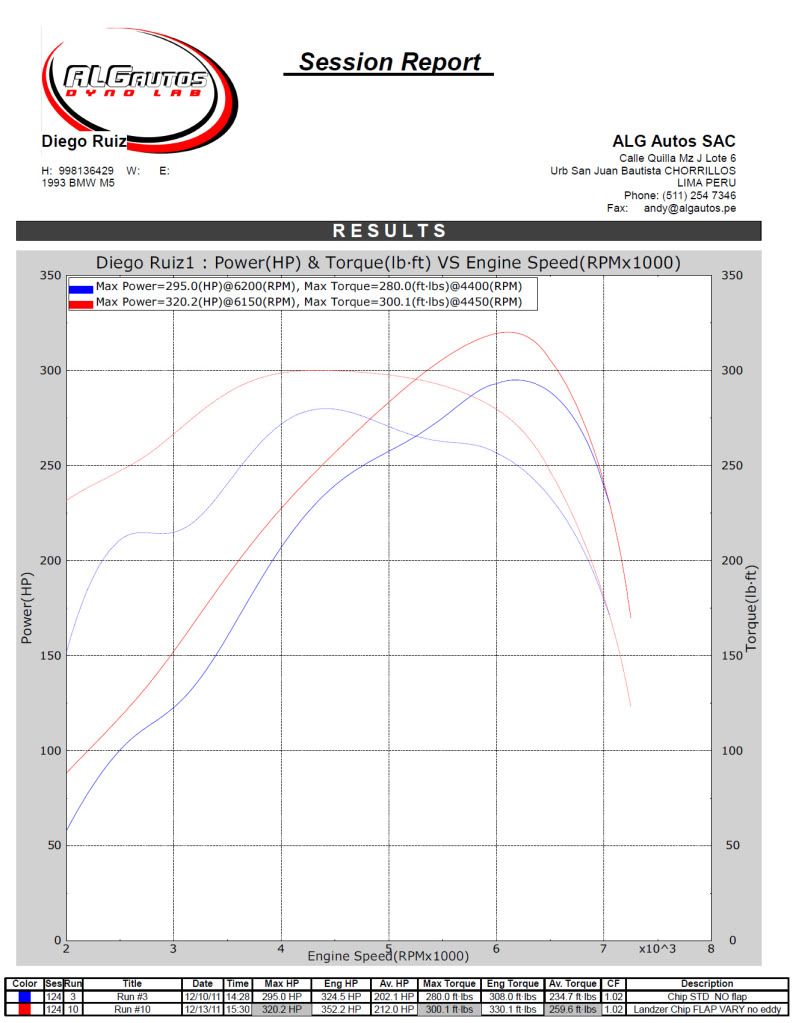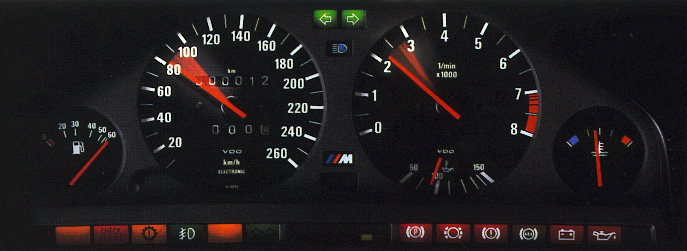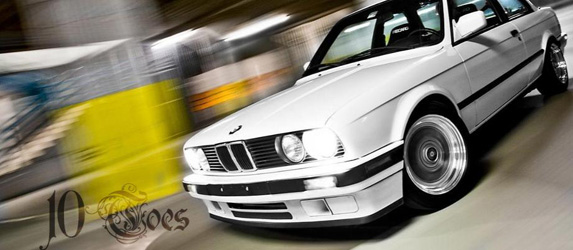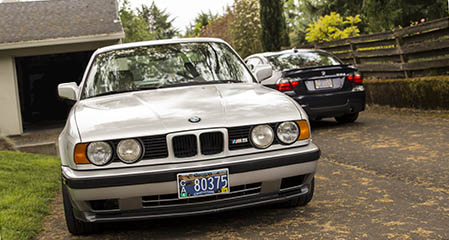Hello board,
thought would share this dyno comparison, between the stock chip and the Landzer (germany) chip I sourced.
First off, I would like to say, both runs were total bone stock engine except BOTH runs were equipped with the K&N dropp in filter (in stock air filter box).
I also would like to comment that the BLUE (run 3) was made w/o being working the resonance flap (my mistake that I didn't check that while it made the pass) and the RED (run 10) I was able to hold in close position by hand, until the dyno operator, gave me the signal to release it at about 3.5-3.7K RPM's simulating the stock, or believed stock working operation. We played with this before in other runs and saw better gains doing this by hand at those RPM's.
This means that the TQ band, that you see in the graph, not only the chip add more power in the entire band, but also my OWN INTERVENTION by manipulating the flap resonance with the Landzer chip, makes the comparison not so desirable but oh well....my fault for not checking that when did the first run with the stock chip.
Gotta check why is not working the resonance flap. I changed all the vacuum hoses and checked the selenoid was working way before the dyno runs, to be more precise it was done when I was doing the "little Overhaul" few months back. Got some hoemwork to do now.
I will post later few interesitng numbers in the mid range....it's awesome how much more power the engine picked up in not just the peak power values but also in the entire power band.
These values are at the wheel. Dyno machine is a DynoCOM.

-Diego
__________________
thought would share this dyno comparison, between the stock chip and the Landzer (germany) chip I sourced.
First off, I would like to say, both runs were total bone stock engine except BOTH runs were equipped with the K&N dropp in filter (in stock air filter box).
I also would like to comment that the BLUE (run 3) was made w/o being working the resonance flap (my mistake that I didn't check that while it made the pass) and the RED (run 10) I was able to hold in close position by hand, until the dyno operator, gave me the signal to release it at about 3.5-3.7K RPM's simulating the stock, or believed stock working operation. We played with this before in other runs and saw better gains doing this by hand at those RPM's.
This means that the TQ band, that you see in the graph, not only the chip add more power in the entire band, but also my OWN INTERVENTION by manipulating the flap resonance with the Landzer chip, makes the comparison not so desirable but oh well....my fault for not checking that when did the first run with the stock chip.
Gotta check why is not working the resonance flap. I changed all the vacuum hoses and checked the selenoid was working way before the dyno runs, to be more precise it was done when I was doing the "little Overhaul" few months back. Got some hoemwork to do now.
I will post later few interesitng numbers in the mid range....it's awesome how much more power the engine picked up in not just the peak power values but also in the entire power band.
These values are at the wheel. Dyno machine is a DynoCOM.

-Diego
__________________






 How works...
How works...


Comment